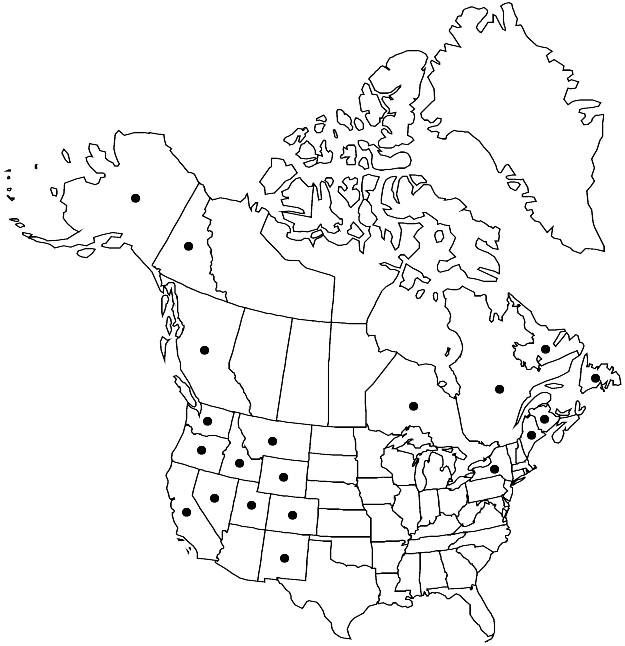Brachythecium erythrorrhizon
in P. Bruch and W. P. Schimper, Bryol. Europ. 6: 18, plate 547. 1853.
Plants small to moderately large, in loose to moderately dense mats, light green to pale stramineous. Stems to 6 cm, creeping, terete- to somewhat complanate-foliate, regularly to irregularly pinnate, branches to 10 mm, straight to curved, terete- to complanate-foliate. Stem leaves erect to erectopatent, straight to falcate-secund, loosely imbricate, ovate-lanceolate, broadest at 1/9–1/7 leaf length, concave, not to strongly plicate, (1.2–)1.5–2.3 × 0.6–1.1 mm; base slightly narrowed, broadly short-decurrent; margins plane or often recurved almost throughout, entire or indistinctly serrulate, especially in acumen; apex gradually tapered, short to moderately acuminate; costa to 60–80% leaf length, strong, sometimes sinking in plication, terminal spine absent; decurrency cells long-rectangular; alar cells subquadrate to short-rectangular, small, 10–30 × 8–15 µm, walls moderately thick, region extensive, of 8(–15) × 8(–13) cells; laminal cells linear or elongate, 30–90 × 6–9 µm; basal cells 20–50 × 9–15 µm, region in 2 or 3 rows. Branch leaves similar, smaller. Sexual condition dioicous. Seta red-brown, 0.8–1.7 cm, smooth. Capsule strongly inclined to horizontal, reddish, rarely elongate, curved, 2 mm; annulus separating by fragments; operculum conic. Spores 14–20 µm.
Distribution

North America, Eurasia.
Discussion
Varieties 2 (2 in the flora).
Capsules are rare in Brachythecium erythrorrhizon. The plants have falcate-secund leaves and thus are similar to those of Brachytheciastrum, but the latter genus has autoicous or synoicous sexual condition and serrulate leaf margins, and lacks a broadly decurrent leaf. Brachythecium albicans is similar to B. erythrorrhizon in its dioicous sexual condition, subentire leaf margins, extensive group of alar cells, and conspicuous decurrencies. However, B. erythrorrhizon differs in its leaves that are ovate-triangular versus ovate, broadest at 1/9–1/7 their length versus 1/7–1/5, strongly plicate, more gradually acuminate, and usually distinctly falcate. Brachythecium salebrosum is similar to B. erythrorrhizon in having plicate, often more or less falcate leaves, but differs in its autoicous sexual condition, a smaller group of subquadrate alar cells, and stronger serration of leaf margins. Collections from the alpine zone in the Rocky Mountains referred to B. erythrorrhizon are quite different from the common phenotype of this species in having straight and small leaves, shorter than 1.5 mm.
Selected References
None.
Lower Taxa
Key
| 1 | Leaves 1.5-2.3 mm, falcate-secund; laminal cells linear, 60-90 µm; widespread. | Brachythecium erythrorrhizon var. erythrorrhizon |
| 1 | Leaves 1.2-1.5(-1.7) mm, straight; laminal cells elongate, 30-60 µm; Colorado, Wyoming. | Brachythecium erythrorrhizon var. alpinum |